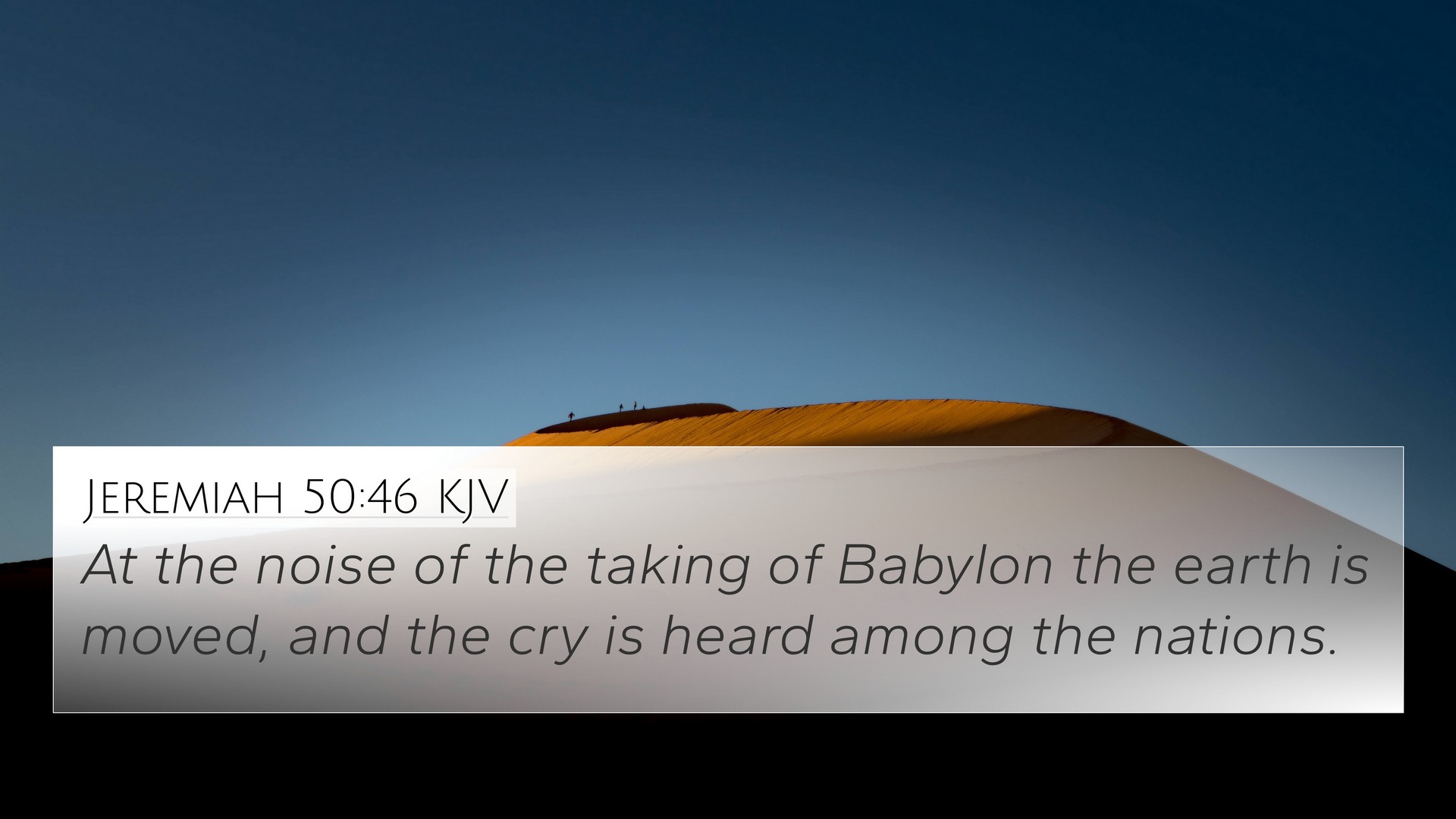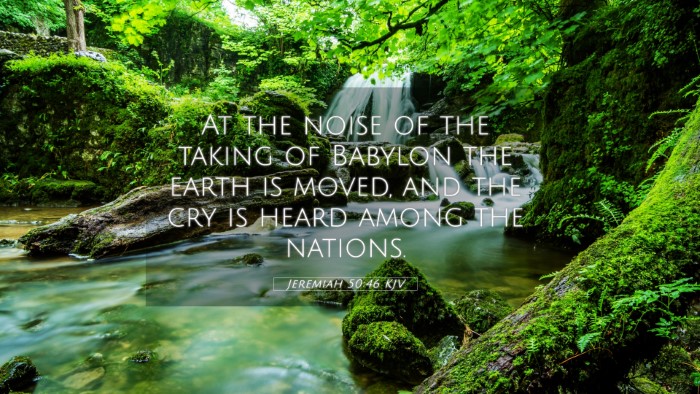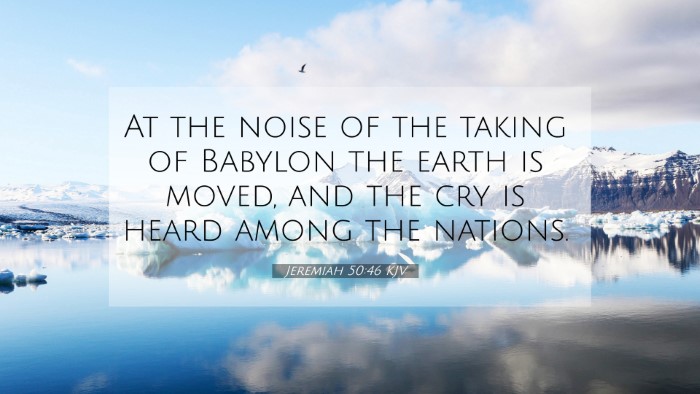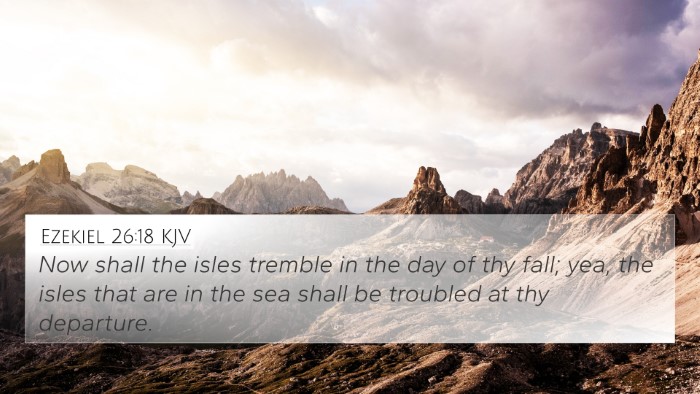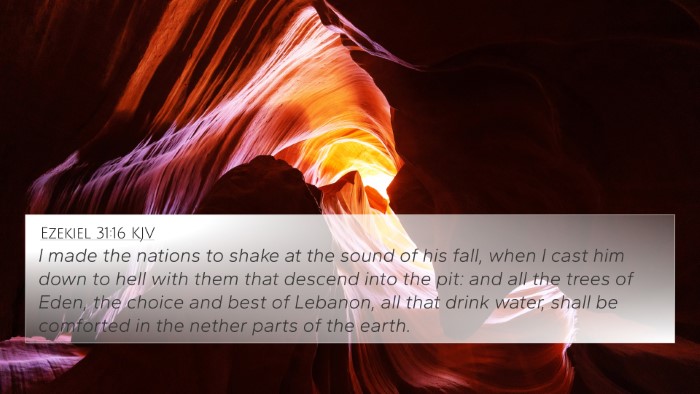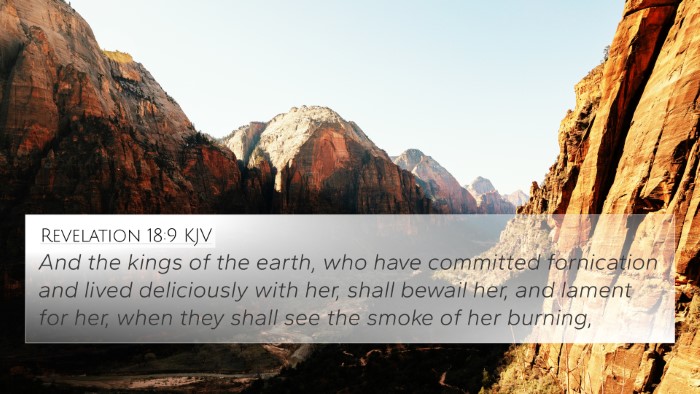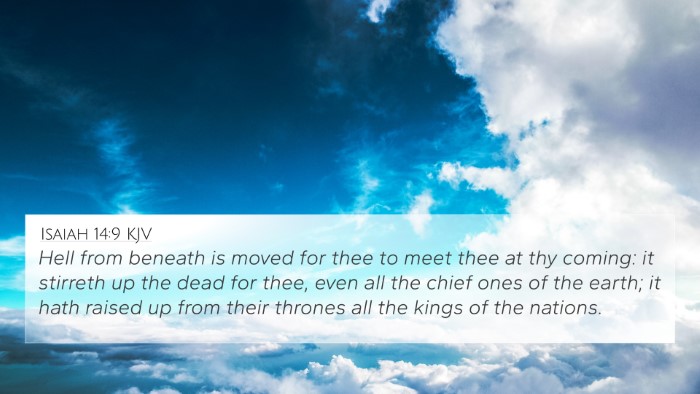Understanding Jeremiah 50:46
Verse: "At the noise of the taking of Babylon the earth is moved, and the cry is heard among the nations." - Jeremiah 50:46
This verse serves as a powerful conclusion to the prophecies against Babylon, illustrating the impact of its downfall not just locally, but internationally. Here, we will explore its meaning drawing from various public domain commentaries, connecting it to related scriptures, and revealing the thematic significance through cross-references.
Summary of Jeremiah 50:46
The passage describes a great upheaval experienced throughout the earth at the news of Babylon's captivity. Matthew Henry highlights that the fall of such a monumental city would send shockwaves across the lands, showcasing God’s dominion over nations. Albert Barnes emphasizes that the voice of destruction would amplify, echoing the divine judgment upon a once-great empire.
Insights from Public Domain Commentaries
- Matthew Henry: He notes that the noise signifies both the physical calamity and the grief involved in the event of Babylon's downfall. It reflects God's justice against cruelty and idolatry practiced by Babylon.
- Albert Barnes: His analysis emphasizes the phrase "the cry is heard among the nations" as an indication that Babylon's fall serves as a dire warning and a fulfillment of God’s promises against sin.
- Adam Clarke: Clarke discusses the implications for the surrounding nations, suggesting that they too would be shaken by the news, akin to a ripple effect that challenges their stability and power.
Thematic Connections
This verse can be understood in a larger context of divine judgment and the sovereignty of God. The ramifications of Babylon's fall serve as a metaphor for God's control over all human kingdoms and an assurance of hope for His people. Below are some of the important themes that emerge when cross-referencing this scripture.
Cross-Referencing Biblical Texts
- Isaiah 13:19-22: A related prophecy detailing the destruction of Babylon and the desolation that would follow.
- Revelation 14:8: This New Testament passage alludes to Babylon's fall, reiterating its inevitability and the world’s response to it.
- Daniel 5:30-31: This showcases God's hand in Babylon's actual fall as recorded in history when Belshazzar was slain.
- Jeremiah 25:12: Links to God’s promise of making Babylon a desolate and insufferable place due to its wickedness.
- Jeremiah 51:54-55: Further discusses the lamenting heard for Babylon’s destruction, underscoring the global turmoil it causes.
- Ezekiel 26:15-18: Describes the effect of Tyre’s fall, drawing parallels with how great cities’ downfalls reverberate across nations.
- Lamentations 1:1: The desolation and mourning for Jerusalem can be compared as the responses of a nation to devastation.
- Micah 4:10: Emphasizes God's overarching power in times of great conflict, highlighting the contrast between God's justice and human injustice.
- Matthew 24:7: Jesus speaks of nations rising against nations, linking the theme of chaos as a mark of ultimate judgment.
- Acts 2:19-20: Foretells signs and wonders as indicators of God's impending judgments, reminiscent of the reactions at Babylon’s fall.
Importance of Cross-Referencing
Cross-referencing Bible verses is crucial for a deeper understanding of scripture. By exploring connections between these texts, readers gain insights into the recurring themes of judgment, sovereignty, and hope in God's plan. Utilizing tools like a Bible concordance or a cross-reference Bible study guide can aid in this exploration.
How to Use Bible Cross-References
When studying scripture, consider the following methods for effective cross-referencing:
- Utilize a Bible concordance to find related verses.
- Identify themes present in multiple scriptures, facilitating thematic connections.
- Create a chart or a list for comparative analysis between connected verses.
- Analyze how different authors discuss similar themes or prophecies.
Conclusion
Jeremiah 50:46 encapsulates the gravity of God's judgment against Babylon, demonstrating the importance of cross-referencing verses for a holistic understanding of Biblical themes. Drawing insights from public domain commentators enriches this understanding, allowing for reflective study on how each part of scripture interlinks and emphasizes God’s narrative across worlds.
By examining these relationships, we can better comprehend God's intentions and the historical context surrounding each prophecy, ultimately enhancing our spiritual insight and grounding in faith.
